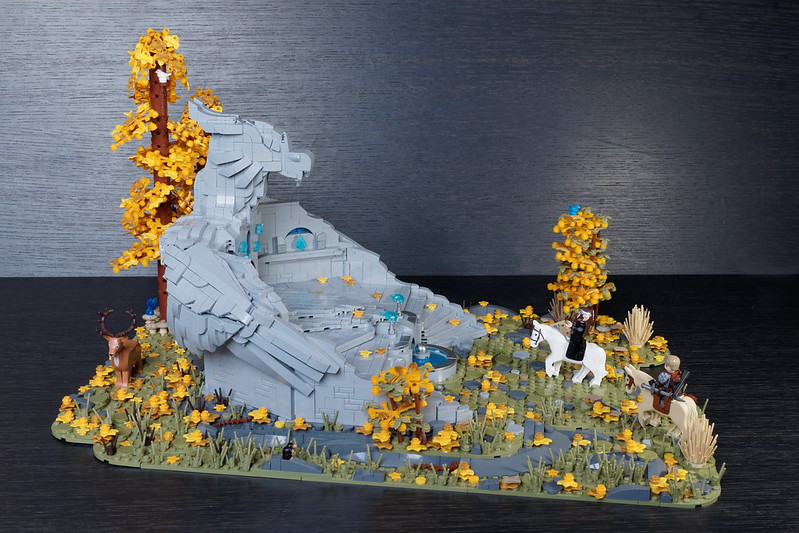This guide covers the base design I’ve used in several builds now, including Forestmen Hideout and Dwarven Ballistas.
When setting up the studs up base that makes the core of the model, be sure to only step in increments of even studs (2,4,6, etc.). To allow for a slimmer edge, I used a single layer of sideways bricks at the lowest point of this base, attached via plate modified with stud.

Since it is only one stud thick, it won’t match up perfectly with the studs up areas of the landscape. But by including brick modified with stud in that layer you can attach plates over the sideways portion.

As you can see here. I like using a mix of slopes, plates, and round plates in the dirt sections, topped with plates and wedge plates in the grass color.

To transition to a taller section of base just use stepping studs up plates – layering the grass color over the dirt color to give a smooth elevation change.

Now that the SNOT edge is two studs deep it will fit perfectly under the studs up landscape.


Once again bricks, plates, and slopes are used to make the irregular edge.

And the second and consecutive layers are then stepped back slightly from the first.


Occasionally it’s useful to build brick modified with stud into the SNOT portions to allow for easier attachment of the studs up plates. This corner portion will serve as another transition as the base gets thicker once again.

The new 1x2x2/3 brick modified with stud are useful to give plenty of connection points on upper layers.

Following are several pictures showing in detail how I built this section of the base.




Once again I’ll use studs up building to transition between different levels of the SNOT base.




And there is the idea behind making a base in this style. You could mix in more studs up areas, or have slopes turned upright to give different looks.

It’s a simple solid design that only takes a little practice to get the hang of.
As always your feedback is appreciated, and there are plenty more tutorials and build logs to come!






Thanks for the insight on these irregular bases! Always helpful!
Thanks guys! Glad you enjoyed it.
Many thanks, it s always a pleasure to discover the technics used behind the MOC